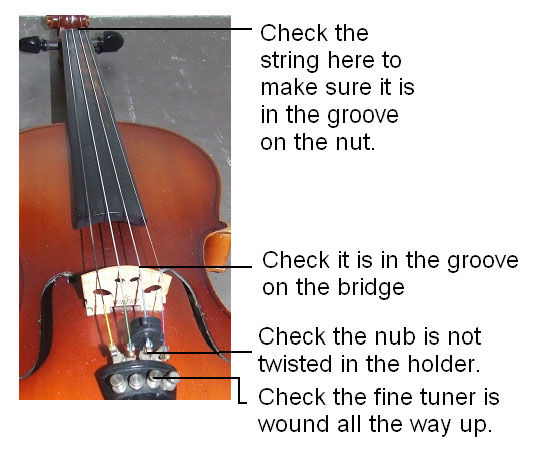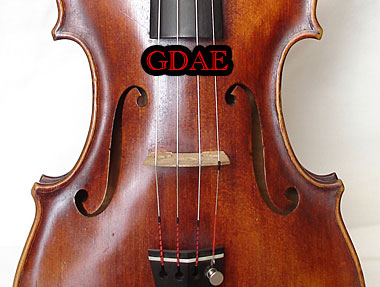The quality of the sound that a violin produces depends on many aspects. It depends on the skill of the violin player, the quality of the violin’s timber, the set up of the violin, the quality of the parts that are used to set up the violin (bridge, sound post) and the quality of the violin strings. You may be surprised how much violin strings can differ from one other. Each variety of strings has certain qualities that will affect the tone of your violin as you play. The violin’s sound quality is, of course, very important for the musician’s own enjoyment and for the enjoyment of the audience, whether performing as a professional violin player or as an amateur. Whereas sound quality is the most important factor for advanced players and performers, durability is important for those who are starting off to learn the basics of violin playing.
The Three Basic Types of Violin Strings
There are three basic types of violin strings. Each of these strings displays different qualities in terms of durability, stability of tone, flexibility, richness of tone, and they strongly differ in the price. Here you will clearly see the differences between each of the of string types.
- The Gut Core Strings – This type of string has a very rich sound. The gut string used to be the most popular string for most professional violinists because of its tonal quality. Gut strings are very sensitive to weather changes and the pitch can change from when weather conditions change. That is why gut strings are considered high maintenance strings. They need to be tuned very often, and these strings can easily snap and break without much warning. This type of string is expensive but it is still considered worth the price by some violinists because of its warmth, richness and overall high quality. Pure gut strings – without any metal winding – were used before the metal winding was developed. There are still ensembles today using pure gut strings, particularly ‘Baroque’ ensembles who have the interest in replicating early music with as little changes as possible.
- The Synthetic Core String – Thisetype of string has some qualities of gut strings and some of the steel strings. They are both durable and show a high quality in terms of tone and projection. Some more recently developed strings with a synthetic core show the complex properties of the gut string’s sound. These strings respond quicker than gut strings. Most advanced students and professionals musicians choose this string because it is more durable, less likely to get out of tune due to minor weather and temperature conditions, and yet they still deliver the desired quality of sound. Even the most expensive strings with a synthetic core are less expensive than gut strings.
- The Steel Core String – This is the most durable among these three types of strings. Because it has a steel core, it doesn’t easily break or snap when it is played. These are recommended for those who are starting to study violin. These violin strings are tough and cheaper, compared to most synthetic and all gut strings. However, the sound is not as mellow as the gut and synthetic core string. The sound is more metallic and even harsh in cases of really cheap steel strings. They don’t sound as soothing to the ears because of their high frequency level of ‘overtone’ vibrations. They have lots of tension and therefore they produce a more piercing sound. For small violins up to ½ size steel strings are often recommended as they yield more sound volume in small violins.
- E strings are often made of plain steel, irrespective of the type of the other strings.




